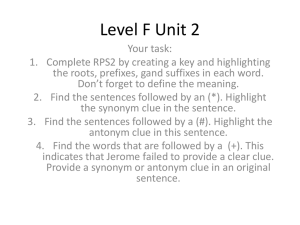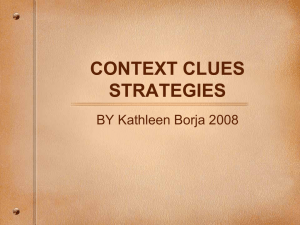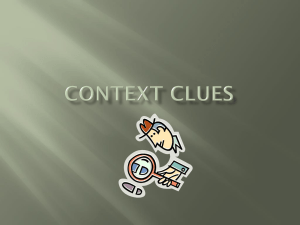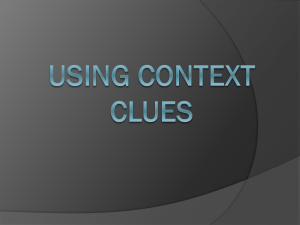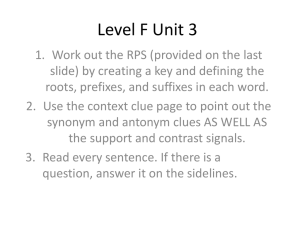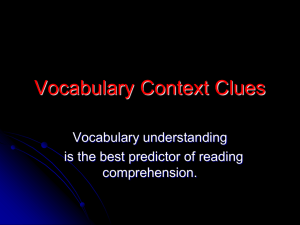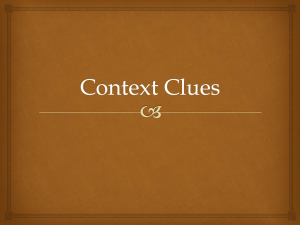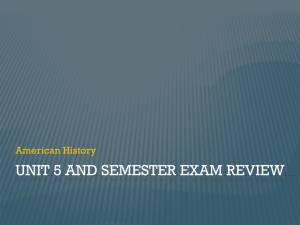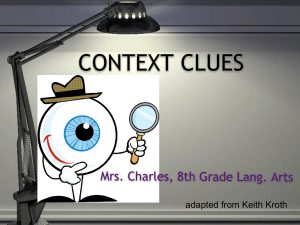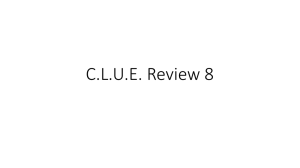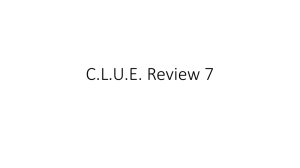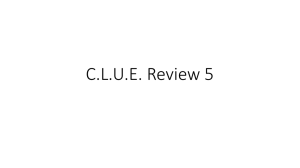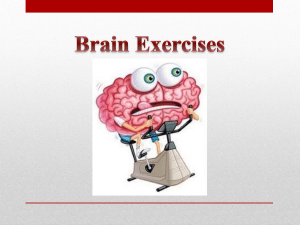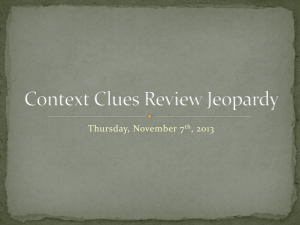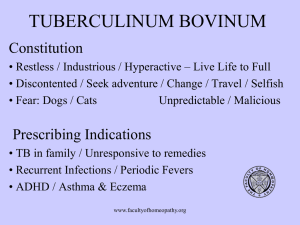Contextual Clues
advertisement
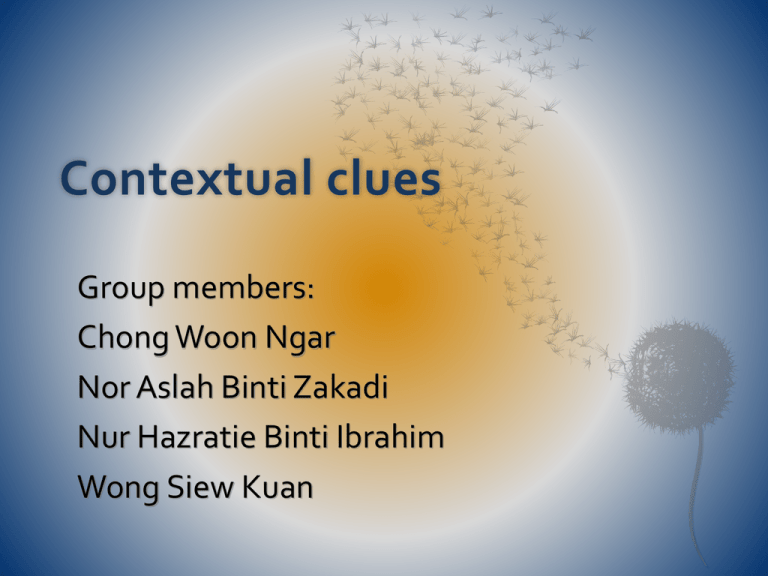
Contextual clues Group members: Chong Woon Ngar Nor Aslah Binti Zakadi Nur Hazratie Binti Ibrahim Wong Siew Kuan What is Contextual Clues Contextual Clues are hints that the author gives to help define a difficult or unusual word. The clue may appear within the same sentence as the word to which it refers, or it may follow in a preceding sentence. Because most of your vocabulary is gained through reading, it is important that you be able to recognize and take advantage of context clues. Context Clues – How Do They Help You Read New Words? Textbook writers and authors include words or phrases to help their readers understand the meaning of a new or difficult word. These words or phrases are built into the sentences around the new or difficult word. By becoming more aware of the words around a difficult word, readers can make logical guesses about the meanings of many words. Types of Context Clues Authors use many different types of context clues when writing texts. Ten of these types are: Definition or Description clue Synonym Restatement clue Contrast or Antonym clue Mode and Tone clue Example clue Experience clue Analysis or Structure clue Inference clue Cause and Effect clue Explanation clue Types of Context Clues Synonym A synonym, or word with the same meaning, is used in the sentence. My opponent's argument is fallacious, misleading – plain wrong. Antonym A word or group of words that has the opposite meaning reveals the meaning of an unknown term. Although some men are loquacious, others hardly talk at all. Types of Context Clues Explanation The unknown word is explained within the sentence or in a sentence immediately preceding. The patient is so somnolent that she requires medication to help her stay awake for more than a short time. Example Specific examples are used to define the term. Celestial bodies, such as the sun, moon, and stars, are governed by predictable laws. DEFINITION / DESCRIPTION CLUE The new term may be formally defined, or sufficient explanation may be given within the sentence or in the following sentence. Clues to definition include “that is,” commas, dashes, and parentheses. His emaciation, that is, his skeleton-like appearance, was frightening to see. “Skeleton-like appearance” is the definition of “emaciation.” CONTRAST / ANTONYM CLUE Antonyms are words with opposite meanings. An opposite meaning context clue contrasts the meaning of an unfamiliar word with the meaning of a familiar term. Words like “although,” “however,” and “but” may signal contrast clues. When the light brightens, the pupils of the eyes contract; however, when it grows darker, they dilate. “Dilate” means the opposite of “contract.” MOOD / TONE CLUE The author sets a mood, and the meaning of the unknown word must harmonize with the mood. Examples: The lugubrious wails of the gypsies matched the dreary whistling of the wind in the all but-deserted cemetery. “Lugubrious,” which means “sorrowful,” fits into the mood set by the words “wails,” “dreary,” and “deserted cemetery.” EXPERIENCE CLUE Sometimes a reader knows from experience how people or things act in a given situation. This knowledge provides the clue to a word’s meaning. Examples: During those first bewildering weeks, the thoughts of a college freshman drift back to high school where he was “in,” knew everyone, and felt at home. A feeling of nostalgia sweeps over him. ANALYSIS OR STRUCTURE CLUE The parts used to construct a word can be direct clues to meaning. Knowledge of prefixes, roots, and suffixes can aid a reader in using this type of context clue. Learning one word part can add dozens of words to a reader’s vocabulary. The power of word parts lies in the ability to combine the roots and affixes with the context in which a word is used to discover the author’s meaning. Examples: The story is incredible. The root cred means “to believe,’ and the prefix in means “not.” Therefore, if a story is incredible, it is unbelievable. CAUSE AND EFFECT CLUE The author explains the reason for or the result of the word. Words like “because,” “since,” “therefore,” “thus,” “so,” etc. may signal context clues. Example: She wanted to impress all her dinner guests with the food she served, so she carefully studied the necessary culinary arts. “Culinary” means “food preparation.” INFERENCE CLUE Sufficient clues might be available for the careful reader to make an educated guess at the meaning. Example: She told her friend, “I’m through with blind dates forever. What a dull evening! I was bored every minute. The conversation was absolutely vapid.” “Vapid” means “uninteresting.”
